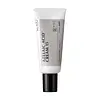What's inside
What's inside
 Key Ingredients
Key Ingredients

 Benefits
Benefits

 Ingredients Side-by-side
Ingredients Side-by-side

Water
Skin ConditioningAlpha-Arbutin
AntioxidantGlycerin
HumectantPropanediol
SolventDipropylene Glycol
HumectantCurcuma Longa Root Extract
MaskingHydroxyacetophenone
AntioxidantXanthan Gum
EmulsifyingPhenoxyethanol
PreservativeLactobacillus
Skin ConditioningAmmonium Polyacryloyldimethyl Taurate
Emulsion StabilisingPolysorbate 20
EmulsifyingButylene Glycol
HumectantDisodium EDTA
Ethylhexylglycerin
Skin Conditioning1,2-Hexanediol
Skin ConditioningTocopheryl Acetate
AntioxidantDiglucosyl Gallic Acid
Water, Alpha-Arbutin, Glycerin, Propanediol, Dipropylene Glycol, Curcuma Longa Root Extract, Hydroxyacetophenone, Xanthan Gum, Phenoxyethanol, Lactobacillus, Ammonium Polyacryloyldimethyl Taurate, Polysorbate 20, Butylene Glycol, Disodium EDTA, Ethylhexylglycerin, 1,2-Hexanediol, Tocopheryl Acetate, Diglucosyl Gallic Acid
Water
Skin ConditioningAzelaic Acid
BufferingButylene Glycol
HumectantMethylheptyl Laurate
EmollientDodecane
PerfumingPentylene Glycol
Skin ConditioningSqualane
EmollientGlyceryl Stearate
EmollientBehenyl Alcohol
EmollientHydrogenated Lecithin
EmulsifyingGlyceryl Behenate
EmollientPolyglyceryl-6 Octastearate
EmulsifyingDipotassium Glycyrrhizate
HumectantSodium Hyaluronate
HumectantCentella Asiatica Extract
CleansingScutellaria Baicalensis Root Extract
Astringent(Licorice/Reynoutria Japonica) Root/Stem Extract
AntioxidantGlycyrrhiza Glabra Root Extract
BleachingMelaleuca Alternifolia Leaf Extract
PerfumingRosmarinus Officinalis Leaf Extract
AntimicrobialAnthemis Nobilis Flower Extract
MaskingHydroxyethylcellulose
Emulsion StabilisingZinc Borosilicate
Silver Oxide
AntimicrobialWater, Azelaic Acid, Butylene Glycol, Methylheptyl Laurate, Dodecane, Pentylene Glycol, Squalane, Glyceryl Stearate, Behenyl Alcohol, Hydrogenated Lecithin, Glyceryl Behenate, Polyglyceryl-6 Octastearate, Dipotassium Glycyrrhizate, Sodium Hyaluronate, Centella Asiatica Extract, Scutellaria Baicalensis Root Extract, (Licorice/Reynoutria Japonica) Root/Stem Extract, Glycyrrhiza Glabra Root Extract, Melaleuca Alternifolia Leaf Extract, Rosmarinus Officinalis Leaf Extract, Anthemis Nobilis Flower Extract, Hydroxyethylcellulose, Zinc Borosilicate, Silver Oxide
 Reviews
Reviews

Ingredients Explained
These ingredients are found in both products.
Ingredients higher up in an ingredient list are typically present in a larger amount.
Butylene Glycol (or BG) is used within cosmetic products for a few different reasons:
Overall, Butylene Glycol is a safe and well-rounded ingredient that works well with other ingredients.
Though this ingredient works well with most skin types, some people with sensitive skin may experience a reaction such as allergic rashes, closed comedones, or itchiness.
Learn more about Butylene GlycolWater. It's the most common cosmetic ingredient of all. You'll usually see it at the top of ingredient lists, meaning that it makes up the largest part of the product.
So why is it so popular? Water most often acts as a solvent - this means that it helps dissolve other ingredients into the formulation.
You'll also recognize water as that liquid we all need to stay alive. If you see this, drink a glass of water. Stay hydrated!
Learn more about Water